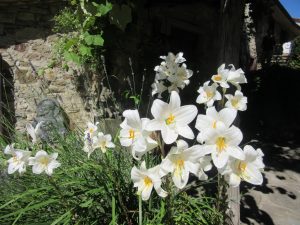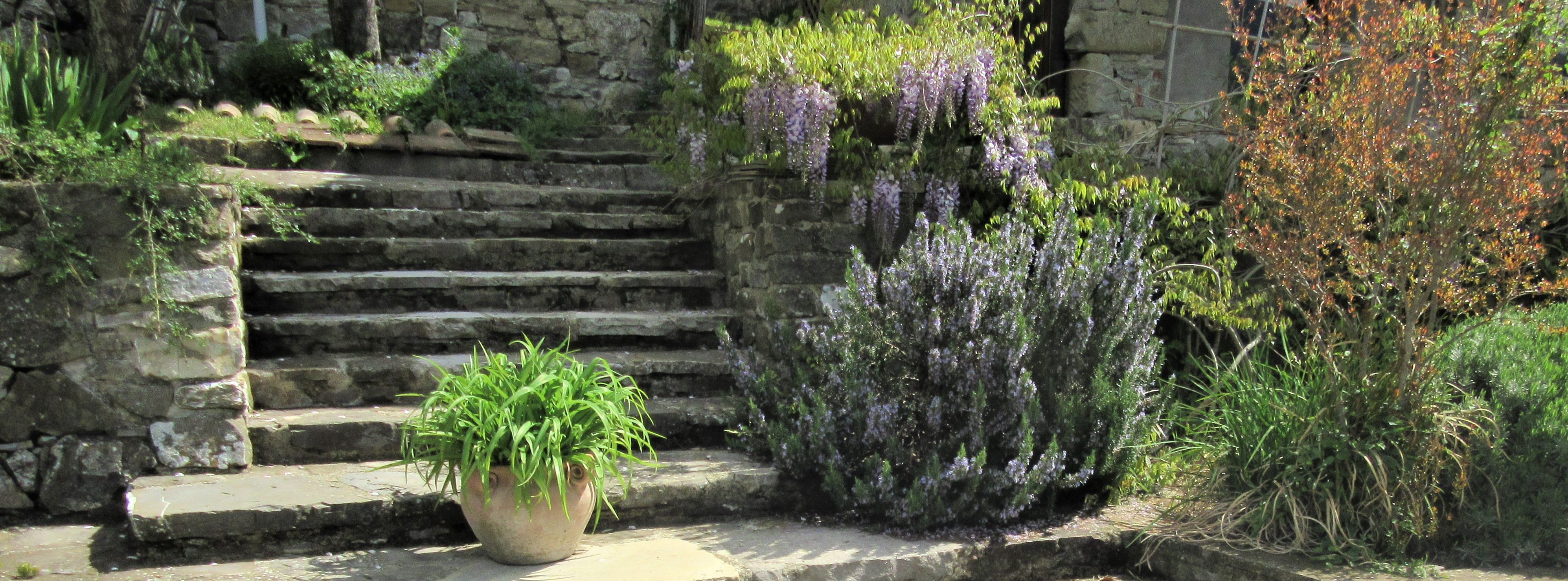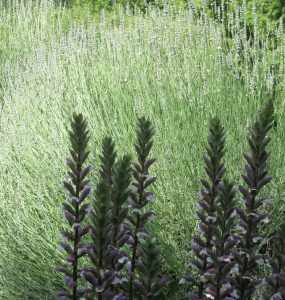
Once there was a hillside so steep that the villagers couldn’t use it to grow food. They found it instead a perfect place to throw away their rubbish.
This became covered with brambles and stinging nettles and was hidden from sight all winter. But with the coming of spring when we went out to start work again, broken bottles and old tin cans gleamed in the sunlight.
The hillside dropped so fast it wasn’t possible to climb down and remove the rubbish.
A foothold had to be cut step by step, and it was very stony and very slow work.

 Now after 30 years, there is a garden of many terraces, many steps, and paths flat enough to walk the whole way round without scrambling and sliding.
Now after 30 years, there is a garden of many terraces, many steps, and paths flat enough to walk the whole way round without scrambling and sliding.
This is thanks to Vittorio who built the drystone cavity walls and buried the rubbish inside.
Plants were brought from the home garden in England, seeds and cuttings were given by friends in the old tradition of garden sharing.
Some thrived, some found the climate didn’t suit them and apples ripened too early to last the winter. Now we have learned to pick them green before the insects get to them, and much less gets wasted.
At 700m., the super continental climate combined with a S.W. facing slope, means that we often get a glut of fruit.
Picking and storing need to be carefully organised. With luck apples last into January.
Those in the freezer will keep us in apple pies until the summer and March will see us eating the last of the kiwis and drinking the juice of September- frozen grapes.
If only we had thought of the size of mature plants and trees when popping a seedling or a sapling into the ground life would have been much easier now. But then planting becomes a passion once the ground is cleared and waiting.